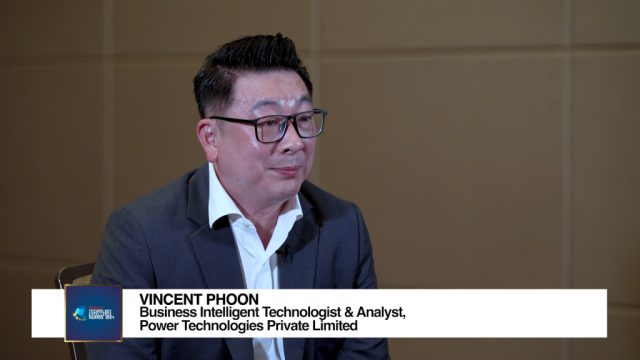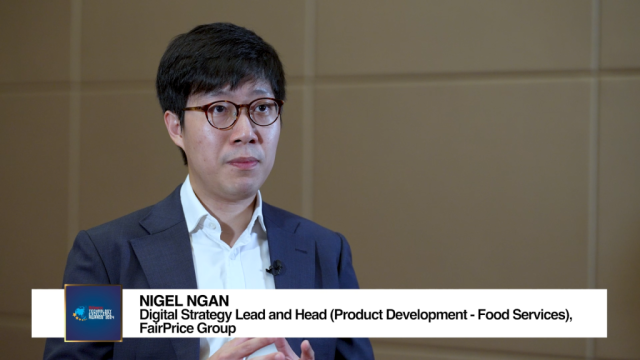
Competing on analytics: The competitive advantage of the 21st century
In fiercely competitive markets, such as those seen today, companies seek every competitive advantage to outwit and outmanoeuvre their competitors to earn the customer dollar. Some companies, such as Harrah Entertainment and Canon, achieve this goal through providing superior customer service and better customer experience.
Other companies, including Audi and Kia, pursue product innovation aggressively to enhance their market share. Whatever the means taken, the common trait of these high growth companies can be traced to their relentless pursuit of first rated information and to rely on them for strategic decision making.
Canon (Asia) for example, possesses detailed information not only of their customer’s service expectations, but also of the service preference of the various customer segments they serve.
Relying on analytics for service decisions have brought positive marketplace outcomes to this multinational. Recent benchmarking studies have shown them to be a customer experience leader in several consumer electronic product categories in Asia.
In the area of marketing, they use customer modelling methods to determine optimal prices for their printers and consumables. In doing so, they reduce the risk of poor decision outcomes. The extent to which a company is able to leverage on customer intelligence as a competitive weapon depends on the degree of its analytical sophistication relative to its industry peers.
Analytical sophistication is a function of various factors, including the accuracy of information used for analysis, the comprehensiveness of the information and how the information is analysed. Studies have shown the extent of analytical sophistication among companies to be varied, and this suggest great opportunities are present to those willing to take the customer intelligence route towards achieving better marketplace outcomes.
Professor Davenport, in his recentbook ‘Competing on Analytics’, presentedthe following chart depicting the competitive advantage that can be can be garnered with the different types of intelligence. He noted that companies such as Harrah Entertainment have relied on predictive modelling analytical techniques to determine what the company should do to improve their customer loyalty.

Similarly, Canadian Imperial Bank relied on the technique but with the objective of predicting the extent of improvements to its bottom line if it were to invest more in improving frontline staff-customer interactions.
In Singapore, Canon marketing group adopted price optimisation models to determine the prices they should set for
their printers and consumables. Despite the benefits good customer intelligence offer to a company, determining the form of intelligence that gives it the competitive advantage is a challenge to companies.
According to Professor Davenport, few industry research practitioners are of such calibre, with most producing the usual status reports comprising descriptive statistical outputs. Further, most users of customer intelligence are also not sufficiently acquainted with the advances in this specialised field to leverage on it.
A few illustrations are provided of how some of the more analytical companies are leveraging on good customer intelligence. The president and CEO of ABB Electric, Daneil Elwing, recognised that the only way for ABB Electric to grow in market share in the 1980 was to ‘capture’ the customers of their competitors.
He employed the services of Professor Dennis H.Gensch to develop customer segmentation models periodically that would allow him to classify its existing and potential customers as loyals, competitive, switchables and lost.
Customers classified as loyals are unlikely to switch, while those in the lost category are loyal to competitors. Those in the competitive segment are slightly more likely to purchase from ABB than from its competitors. Those labelled switchables are slightly more likely to purchase from its competitors than from ABB.
Armed with this information, the company focused all its efforts on the competiive segment and the switchable segment – on the former to prevent them from switching and on the latter to win them over. The analytical technique used, multinomial logic analysis, also provided ABB with information on the ‘desired attributes’ each client sought.
This allowed the company to develop a customised retention and acquisition strategy for each client. Within a short eight years, the new company grew its market share to forty percent. In another study, Professor in Marketing at the University of Connecticut’s School of Business, V. Kumar and his team helped an American telecommunication company segment its customers by considering both the lifetime and referral value of the customers.
The segments were labeled champions (high lifetime and referral values), advocates (low lifetime but high referral values), affluent (high lifetime but low referral values) and misers (low lifetime and referral values). Different marketing strategies were subsequently deployed for the different customer groups.
Such differentiated strategies allowed the telecommunications company to enjoy a return on investment of 13.6 times on their marketing campaigns compared to the usual ROI rates of 4 to 6 times. These illustrations point to two critical success factors in the making of analytical organizations.
The first is a desire for the company to compete on analytics, with the CEO as a key cultivator of such a culture in the organization. The second is the availability of customer analytics expertise. Professor Davenport termed people with such expertise ‘Analytical Professionals’ and distinguishes this elite group from the ‘Analytical Amateurs’, a group more involved in producing ad-hoc and standard status reports. The professor adds that analytical professionals generally hold Ph.D degrees, are experts in the quantitative analytical methods and who ‘speak the business language’.
Experts note the difficulty of hiring such professionals. Professor Hal Varian, University of California (Berkeley), an ex-Google consultant, adds that this is true even for large companies with deep pockets. As an alternative to maintaining a team of analytical professionals, companies can consider the option of using the services of outsourced partners.
There are advantages of this approach. As there are analytical techniques available for different purposes, it is unlikely that an analytical professional can be well versed in all the techniques. Secondly, domain expertise is a necessary prerequisite of such a person. For example, a professional well versed in the marketing domain may not necessarily be aware of the developments in the field of human resources. Hence, by taking the outsourced partner route, a company can choose, as and when the need arises, different partners with specialized domain expertise.
This eliminates the need for a company to maintain large analytical teams with different domain knowledge, which can be very costly. Few research companies can be considered to be top-rated analytical service providers. A good way to establish the level of expertise in a company is to examine the academic qualifications of the analysts, as analytical professionals often have advanced degrees.
ProfitLogic, a retail pricing analytics firm owned by Oracle, uses a cadre of Harvard and MIT Ph.Ds to help clients make pricing decisions.
Blue-dge, a company based in Singapore, was set up with people holding Ph.Ds and professional doctorates from top universities to help clients make better decisions in customer service, customer satisfaction and marketing. Many top companies leverage on the expertise of Blue-dge for making marketing and customer service decisions.
Dr. Raymond Teo is Director of Blue-dge Analytics and Consulting. He is a thought leader in the field of customer insights. He is also with the adjunct faculty of the Singapore Management University. He can be contacted at [email protected].
























 Advertise
Advertise









